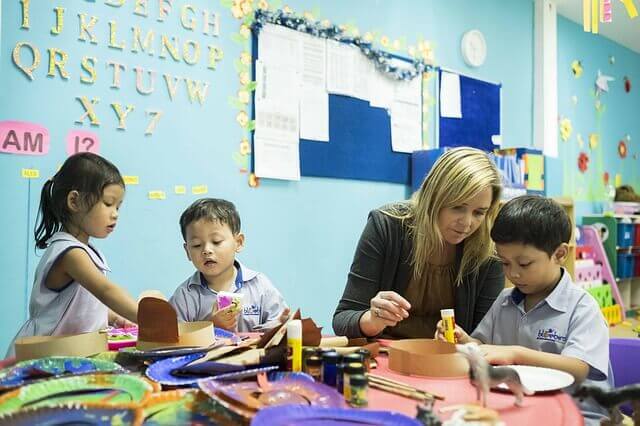A Montessori Preschool Class
The Montessori preschool class aims to provide an environment enriched with materials appropriate to meet the developmental needs of children age three to five. The prepared environment awakens the child’s interests during developmental “sensitive periods” or points at which learning can occur almost without effort. The teacher’s role is to guide them to the materials and activities of the classroom.
Montessori preschool class children may receive a lesson one-on-one
or they may work with one another to practice or demonstrate materials. The practical life materials provide children with real life examples instilling concentration, coordination, independence and order. These skills can be applied to the other areas of the classroom as well.
The sensorial area utilizes many classic Montessori materials such as the pink tower, brown stair, and knobbed cylinders. This material uses a child’s senses to develop concepts of size, shape, sequence, and order.
Language activities provide many levels of experience. Matching encourages the development of visual skills. Sandpaper letters allows the child to experience the shape of letters. In the Montessori preschool class, other lessons practice sound-letter recognition, word building, and writing and reading books.
The Montessori math materials introduce geometric shapes, patterning, counting, and basic number operations of addition and subtraction. Children use actual objects to develop a real understanding of mathematics.
Science and culture are often combined in the Montessori classroom, since both deal with observation and understanding the world around us. Real-life experiences are provided as the child cares for classroom pets, plant seeds in a garden, or waters the plants in the classroom. Continent puzzle maps and land and water forms introduce geography.
So what exactly is a Montessori preschool system? What are the major pros and cons of Montessori education system?
Montessori preschool class teachers must have special training and certification for this level. Teachers include a head teacher, who has completed Montessori training, and an assistant teacher, who seeks to support the work of the classroom






Leave a Reply